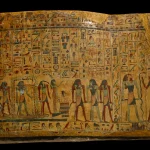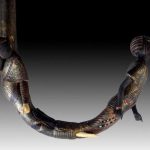Statuette of Tutankhamun with Leopard
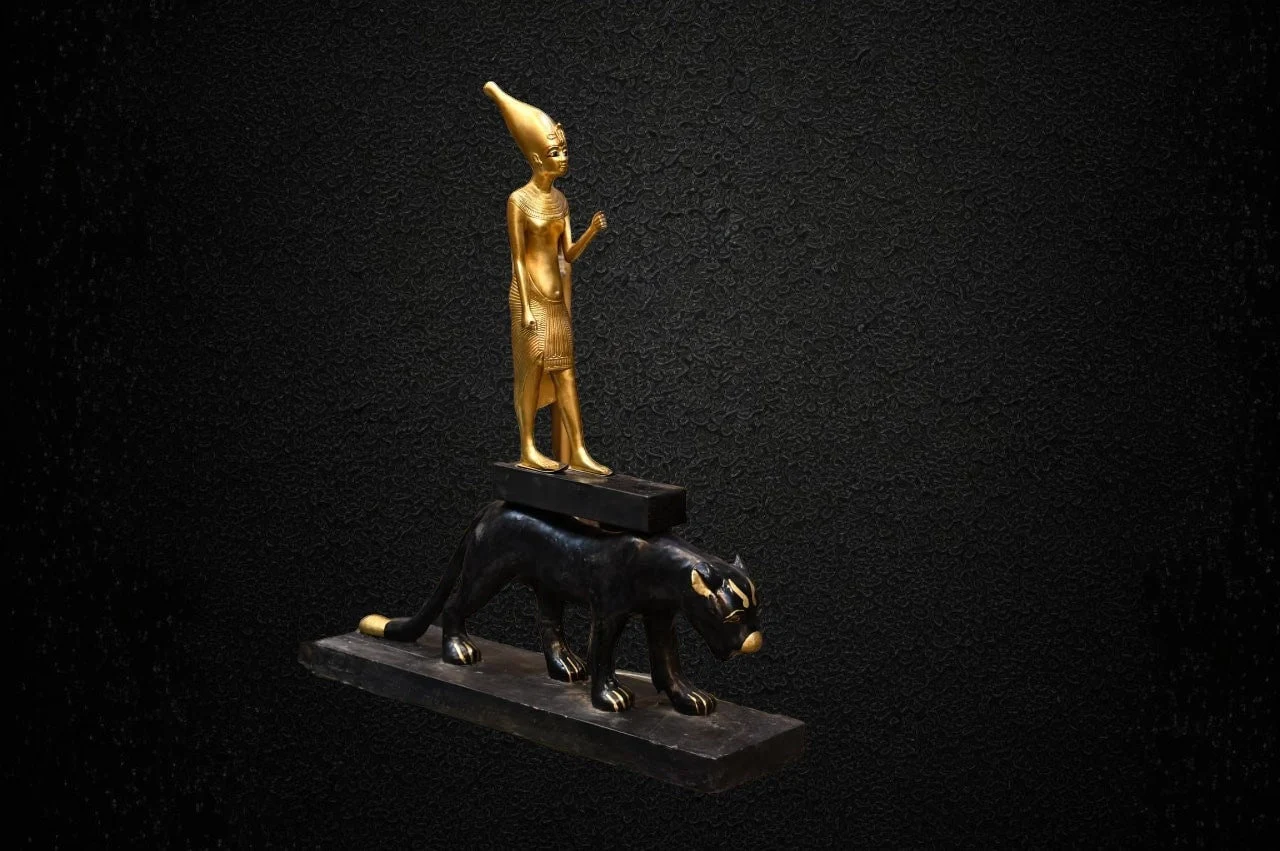
This statuette depicts Tutankhamun wearing the White Crown of Upper Egypt and holding a staff and flail, mounted on the back of a black leopard. The king stands with his left leg forward on a rectangular pedestal attached to the leopard’s back.
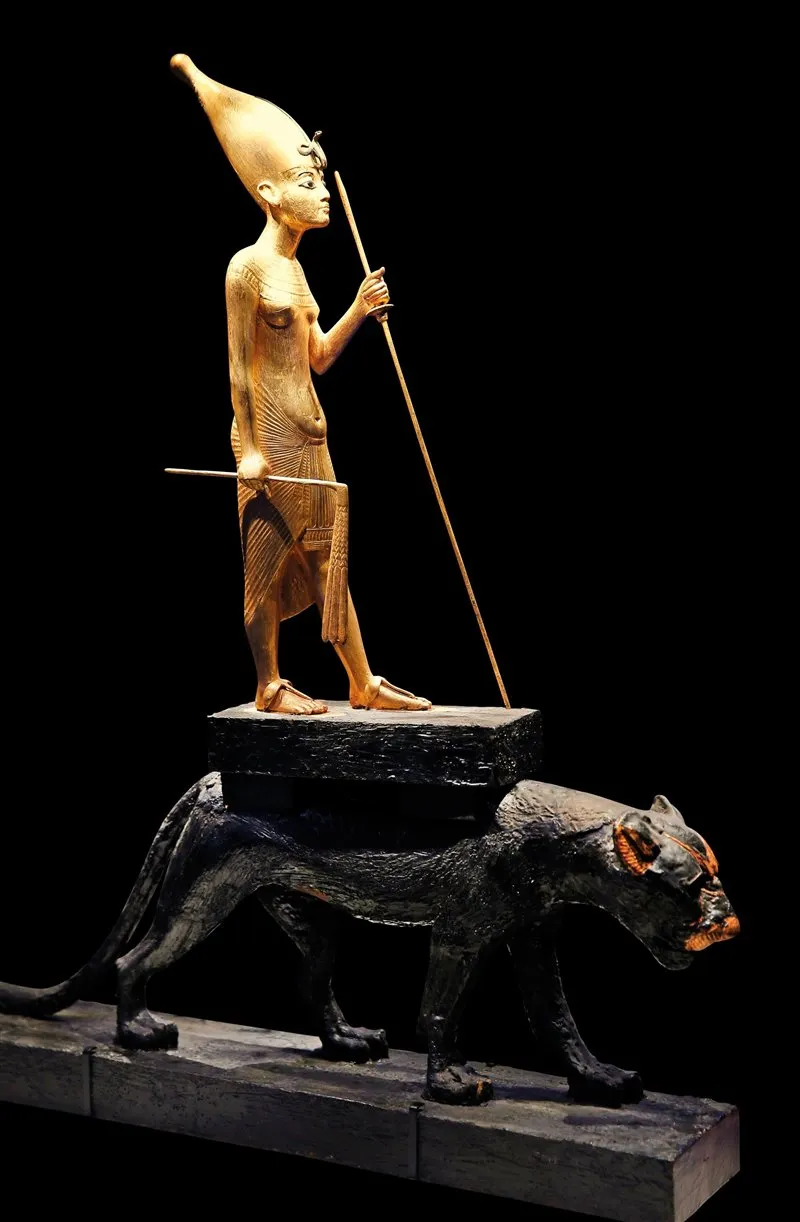
The exaggerated features of the king reflect the influence of the Amarna artistic style. He holds a long staff in one hand and a flail in the other, while wearing a large collar covering his chest and shoulders, ending in a row of drop beads. His lower body is covered by a tight-fitting loincloth, tied at the front and incised with fine lines, and he wears sandals.
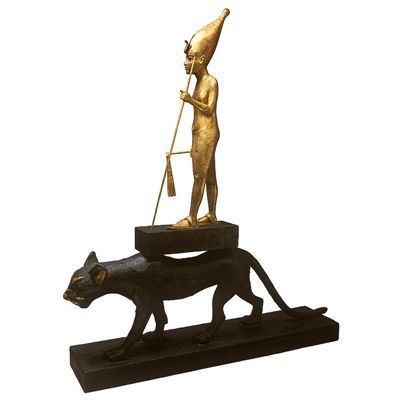
The leopard, with its curved back, is rendered realistically in a furtive, stalking pose. In archaic Egyptian belief, the panther symbolized the night sky and the underworld, which the Pyramid Texts locate among the stars. The golden-toned skin of the king associates him with the sun, looming above the panther to signify triumph over death. The leopard itself represents both strength and grace.
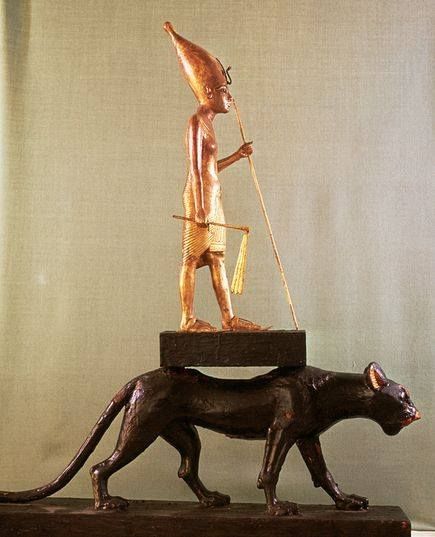
The statuette demonstrates exquisite craftsmanship, highlighting the skill of ancient Egyptian artisans.
New Kingdom, late 18th Dynasty, reign of Tutankhamun, ca. 1332–1323 BC. From the Tomb of Tutankhamun (KV62), Valley of the Kings, West Thebes. Now in the Egyptian Museum, Cairo. JE 60715


